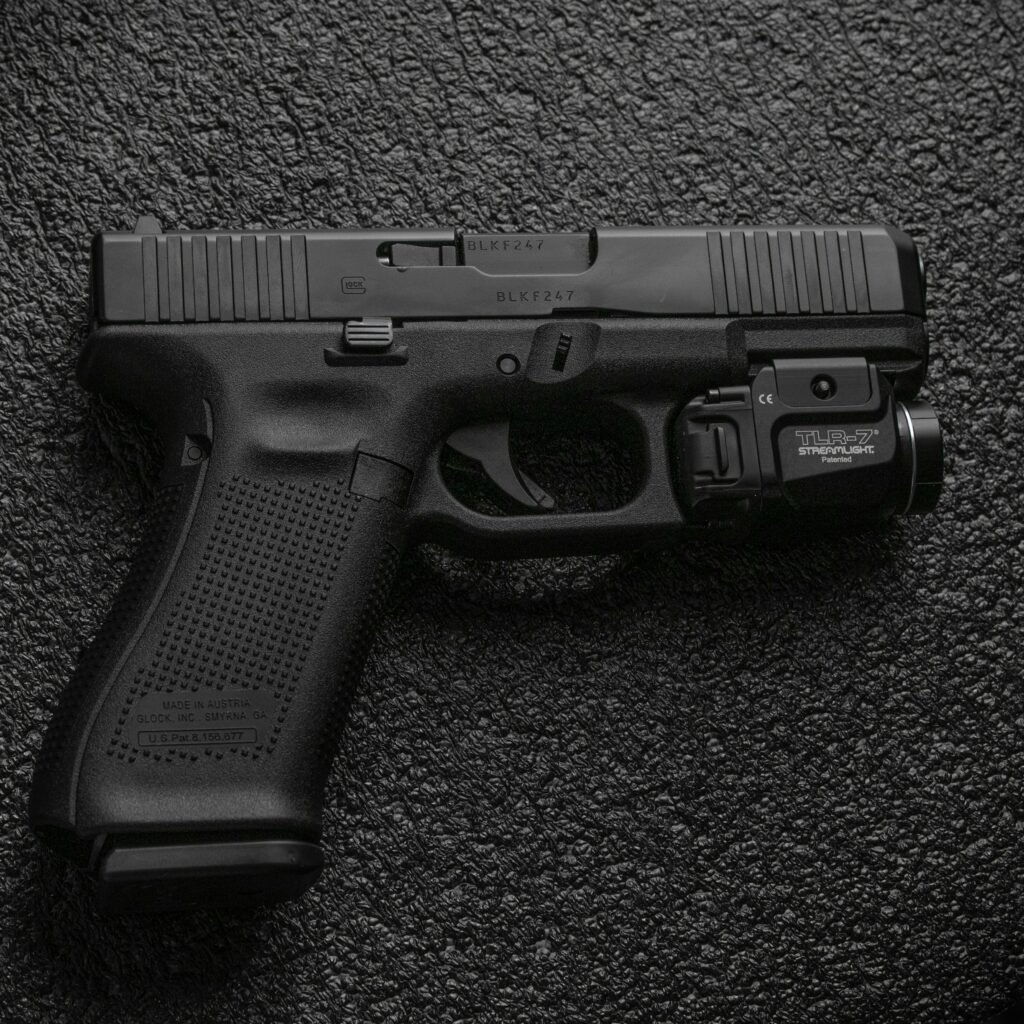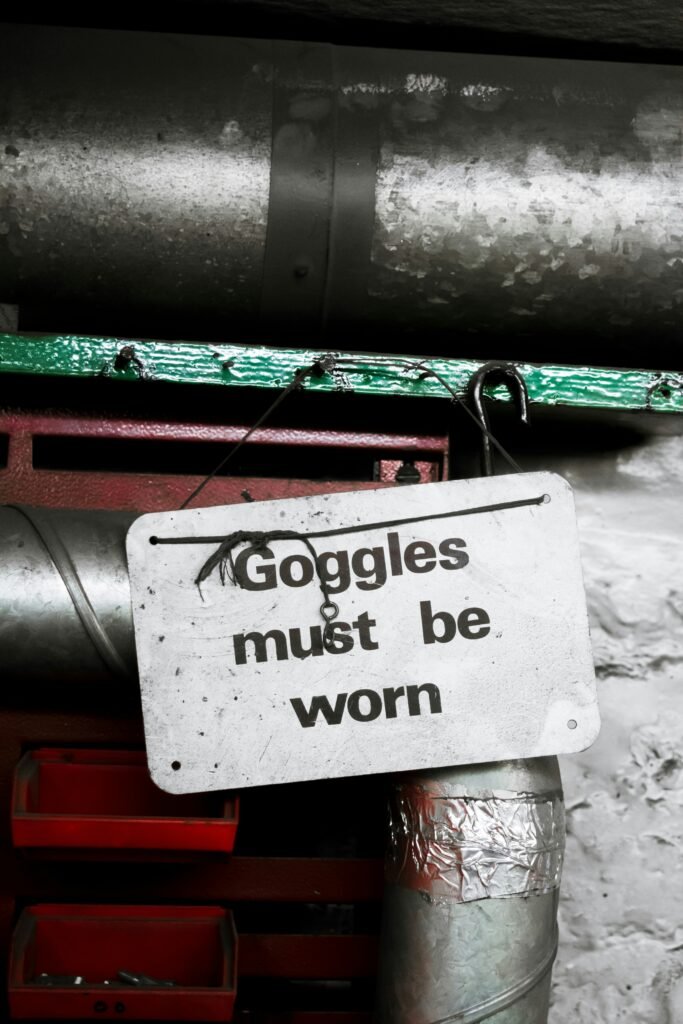In this comprehensive guide, you will learn everything you need to know about ensuring gun safety while on the road. Whether you are a seasoned gun owner or new to firearms, it is crucial to prioritize safety, especially when it comes to storing and transporting guns in your vehicle. From proper holstering techniques to securing firearms and ammunition, this article will provide you with the best practices for gun safety in cars. So buckle up and get ready to become a responsible and informed gun owner on the go!
Securing your firearm in the vehicle
When it comes to securing your firearm in your vehicle, there are several important considerations to keep in mind. Choosing a secure storage solution is paramount to ensure your firearm is not easily accessible to unauthorized individuals. This could include options such as a lockable gun box or a dedicated gun safe designed specifically for vehicles.
In addition to a secure storage solution, firearm retention devices are crucial for ensuring that your firearm stays in place, even during sudden stops or collisions. Retention devices, such as holsters with retention features or straps, help prevent the firearm from moving around or falling out of its storage compartment.
Another option to consider is a vehicle gun safe. These safes are specifically designed to securely store firearms in a vehicle and can be bolted down to prevent unauthorized removal. They provide an extra layer of protection and peace of mind knowing that your firearm is safely stored when you’re on the go.
Utilizing gun locks is another effective method to secure your firearm in the vehicle. Gun locks are designed to prevent the firearm from being fired or accessed without the proper key or combination. They can be easily attached to the firearm and act as a deterrent against unauthorized use.
However, it’s important to avoid storing firearms in glove compartments or center consoles. These locations are easily accessible and may not provide adequate security. Instead, opt for dedicated storage solutions specifically designed for firearm security.
Proper handling and positioning
Proper handling and positioning of your firearm while in the vehicle is crucial for ensuring safety. Always assume the gun is loaded, even if you believe it to be unloaded. This mindset will help you maintain safe handling practices and prevent accidents.
Keep the firearm pointed in a safe direction at all times. This means ensuring that the muzzle is pointing away from any individuals or objects that you do not want to unintentionally shoot. Avoid placing the firearm under the seat, as this can lead to accidental discharges or unauthorized access.
Never leave a firearm unattended in the vehicle. This increases the risk of theft and unauthorized use. Whenever you exit the vehicle, take your firearm with you or secure it in a locked storage solution.
Before handling your firearm, always ensure that the barrel is clear of obstructions. This can be done by visually inspecting the barrel and using a cleaning rod to physically ensure there are no obstructions. Obstructed barrels can lead to dangerous malfunctions when firing the firearm and should always be checked before use.

This image is property of images.unsplash.com.
Concealed carry considerations
If you have a concealed carry permit, it’s important to be aware of the laws regarding concealed carry in your jurisdiction. Different states and countries have varying regulations and requirements for carrying firearms in vehicles. Familiarize yourself with the specifics to ensure you are in compliance with the law.
Obtaining the proper permits or licenses is essential for legally carrying a firearm in your vehicle. These permits ensure that you have undergone the necessary background checks and training to responsibly carry a firearm.
Educating yourself on firearm self-defense laws is also crucial. Understanding when and how you can legally use your firearm for self-defense can help you navigate potentially dangerous situations. It’s important to know your rights and responsibilities as a concealed carry permit holder.
Additionally, practicing situational awareness is key to staying safe while carrying a concealed firearm. Being aware of your surroundings and potential threats can help you avoid dangerous situations and make informed decisions about when to draw or use your firearm for self-defense.
Carrying modes
There are several different carrying modes to consider when transporting your firearm in a vehicle. On-body carry refers to carrying the firearm on your person, typically in a concealed carry holster. This mode of carry ensures that the firearm is always under your direct control and easily accessible if needed.
Off-body carry involves using a bag, purse, or backpack to transport your firearm. If choosing this method, it is crucial to use a dedicated holster or case designed for concealed carry. These holsters or cases should securely hold the firearm in place, preventing accidental discharges or unauthorized access.
When using a dedicated holster or case, consider choosing one with retention features. Retention features, such as straps or locks, add an extra layer of security, ensuring that the firearm remains securely in place during movement.
It is important to note that loosely placing a firearm in a bag or purse without a dedicated holster or case is unsafe and discouraged. This can lead to accidental discharges or unauthorized access to the firearm, creating unnecessary risks.

This image is property of images.unsplash.com.
Safety precautions while driving
While driving, there are several safety precautions you should take regarding your firearm. First and foremost, avoid drawing or handling the firearm while driving. Distractions while driving can lead to accidents and should be minimized as much as possible. If necessary, pull over to a safe location before handling or accessing your firearm.
To prevent movement during sudden stops or collisions, secure the firearm properly. This can be done through the use of retention devices, such as holsters or straps, that keep the firearm firmly in place. Additionally, make sure the firearm is not placed on the passenger seat while driving alone, as it can become a distraction and potentially interfere with driving.
It is crucial to never leave the firearm visible from outside the vehicle. This can increase the risk of theft and unauthorized access. If possible, store the firearm in a locked storage solution or keep it out of sight in a concealed carry holster.
When parking, choose well-lit areas whenever possible and exercise caution when exiting the vehicle. Being aware of your surroundings can help minimize potential risks and ensure your safety while transporting a firearm.
Educating passengers
If you have passengers in your vehicle, it is important to inform them about the presence of firearms. Open and honest communication is key to establishing a safe environment. Letting your passengers know about the firearms in the vehicle can help prevent any potential misunderstandings or accidents.
Take the opportunity to teach your passengers basic gun safety rules. This includes always treating the firearm as if it is loaded, keeping the muzzle pointed in a safe direction, and avoiding unnecessary handling or touching of the firearm. Educating your passengers on these safety rules will help create a shared responsibility for firearm safety while in the vehicle.
Encourage open communication among your passengers about any concerns or questions they may have regarding the firearms. Addressing any worries or misconceptions can help alleviate fears and ensure everyone feels comfortable and secure while in the vehicle.

This image is property of images.unsplash.com.
Proper transportation of firearms
When transporting firearms in a vehicle, there are several important steps to follow to ensure their safe transportation. First and foremost, always unload the firearm before entering or leaving the vehicle. This reduces the risk of accidental discharges and ensures that the firearm is in a safe condition during transport.
It is also essential to store ammunition separately from the firearm. This means keeping the ammunition in a separate locked container or securing it in a way that prevents unauthorized access.
For long guns, such as rifles or shotguns, it is best to transport them in a case specifically designed for firearm transportation. These cases provide added protection and prevent damage to the firearm during transport. Additionally, make sure the firearm is not accessible from the driver’s seat to avoid any accidental handling or unauthorized access.
During stops or overnight stays, it is crucial to secure the firearm properly. This can be done by locking it in a secure storage solution or utilizing retention devices to prevent movement or unauthorized access.
Emergency situations and crisis management
In the event of an emergency situation, it is important to remain calm and composed. Panic can lead to poor decision-making and potentially dangerous actions. Take a deep breath and assess the situation before taking any action involving your firearm.
Avoid brandishing or using your firearm unless absolutely necessary for self-defense. Using a firearm should always be the last resort when all other options have been exhausted. If you do find yourself in a dangerous situation, prioritize your safety and the safety of others. Call emergency services immediately to report the situation and seek their assistance.
When law enforcement arrives, it is crucial to follow their instructions and cooperate fully. Keep your hands visible at all times to avoid any misunderstandings or threats to officer safety. Cooperating with law enforcement ensures a safe resolution to the situation and helps facilitate effective crisis management.
Training and practice
Proper training and regular practice are essential for responsible firearm ownership. Familiarize yourself with the specific firearm’s operation before carrying or transporting it. Each firearm is unique, and understanding its features and how to safely handle it is crucial.
Taking a comprehensive firearms safety course is highly recommended. These courses provide valuable information on firearm safety, laws and regulations, and proper handling techniques. They also offer practical training sessions that allow you to practice your skills in a controlled environment.
Engage in regular practice and training sessions to maintain proficiency with your firearm. This includes practicing shooting techniques, reloading drills, and malfunction clearing procedures. Regular practice ensures that you are comfortable and confident in handling your firearm safely.
Stay updated on relevant laws and regulations regarding firearms and self-defense. Laws can change over time, and it is important to stay informed and comply with any legal requirements.
Finally, refresh your knowledge on self-defense techniques and situational awareness. Self-defense is a complex topic, and staying informed about the latest techniques and strategies can help you make sound decisions in potentially dangerous situations.
Promoting responsible gun storage
Promoting responsible gun storage practices is essential for the safety of yourself, your loved ones, and the community. Support initiatives for safe storage education in your community, such as firearm safety courses or public awareness campaigns. By advocating for safe storage, you can help prevent accidents and minimize the risks associated with firearms.
Investing in secure storage options is a crucial step towards responsible gun storage. Choose storage solutions that meet your specific needs and provide adequate security. This may include gun safes, lockable gun boxes, or dedicated vehicle safes. By investing in secure storage solutions, you can ensure that your firearms are not easily accessible to unauthorized individuals.
Spread awareness about safe gun storage practices among your friends, family, and community. Talk about the importance of secure storage and the potential dangers of improperly stored firearms. Encourage others to follow responsible gun storage practices and provide resources or information to help them get started.
If you become aware of any stolen firearms, report the incident promptly to the appropriate authorities. Stolen firearms pose a significant risk to public safety, and reporting these incidents can help recover the firearms and prevent them from being used in criminal activities.
By following these best practices for gun safety in cars, you can ensure the responsible storage and transportation of firearms, helping to create a safer environment for yourself and those around you.



